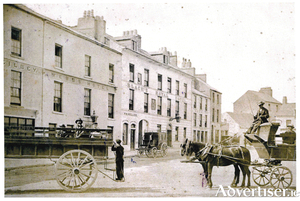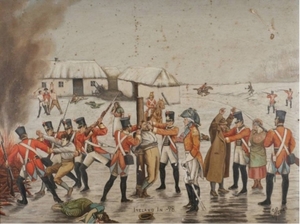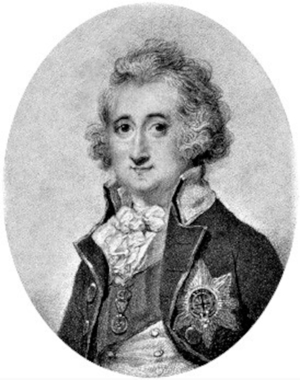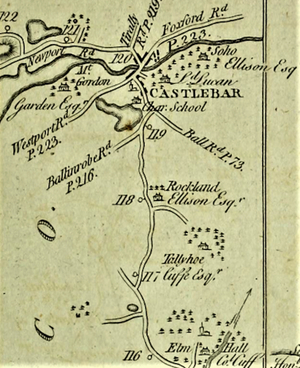Search Results for 'After the Battle'
4 results found.
Bianconi in Galway

Charles Bianconi is generally regarded as the man who put Ireland on wheels. He developed a network of horse-drawn carriages that became Ireland’s first integrated transport system, building on the existing mail roads and coach roads that were already there. There was a general tax on coaches at the time, which precluded the middle classes from using theirs, and a relatively peaceful period after the Battle of Waterloo meant that a great many horses, bred for the army, became cheap on the market. His system offered connections with various termini, his prices were cheap and so he was well patronised, in spite of the discomfort felt by passengers. Often, when going up a hill, some passengers would alight to make the carriage lighter for the horses.
Mayo County Prison after the Battle of Castlebar 1798

The sound of artillery and musket fire has died away. Dead combatants and military ordinance are scattered on the Green in Castlebar. Outside the County Prison on the Green, the blood-soaked body of a lone Fraser Fencible lay dead on the steps – bludgeoned to death by French infantrymen.
Putting Manners on the Irish

On September 6, 1798, a division of the Leicestershire Militia comprising almost six hundred men under the command of the 5th Duke of Rutland, passed through Newcastle-under-Lyme.
When sheep’s heads were on the menu at Castlebar Hospital

On a chilly day in March 1788, John Howard rode into Castlebar on horseback. When he arrived in Dublin days earlier, he noted, ‘I shall set out next week for Connaught and other remote parts of this country, which indeed are more barbarous than the wilds of Russia’.

